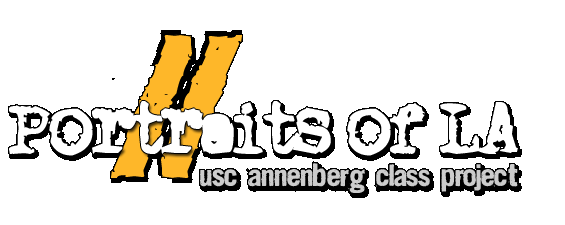"Our Mighty Contribution" 2014
The current mural naturally grabs the eyes attention, some of it is realistic and some of it is abstract, but the transitions blend the wall into one timeless story that fades from sunrise to sundown.
Council District 9 is making an effort to beautify the streets by allocating extra resources to clean up mounds of trash that have accumulated in alleys, sewers and on pavements over years. Residents are pitching in to help, too.
A non-profit organization that helps underprivileged kids ages 8-21 years old in South Los Angeles. APCH prides itself on being a "safe heaven" for children.
Puppeteers at the Natural History Museum and the La Brea Museum at the Tar Pits slip into new roles as prehistoric creatures to combine the power of imagination, wonder and education.
Crenshaw Boulevard developments are well underway, but one group of South L.A. residents are trying to preserve and restore a mural on the wall that sees it all.
Now, some of the original artists and production group Project West are trying to officially declare the area a historic monument, and create a digital application they say will enhance the viewers’ understanding of the art.
Caprice Myers, also known as Secret, is one of the dozen or so artists that worked on the mural back in 2001, he painted three sections of the wall including the drummers playing djembes, Edwin Moses, Haile Selassie in monochrome blue and a full color Marcus Garvey, our mighty contribution means pride and it shows “sense of self worth," said Myers.
It has become a highly respected piece of art in the community, and since inception, Gregory Everett, aka G Bone Capone, the lead producer of the restoration project, said it has been ‘tagged’ less than once a year.
Milan Mitchell, aka Choice, is one of the founders of RTN who said the original concept was to show youth the early history that black people had to go through in America, a pre-history if you will.
"Our mighty contribution is not just about the fact that we picked cotton for a few hundred years, but that we helped build this world, we helped build society, we helped build civilization, and when people drive by here, they say it touches their soul and it makes them pull over, take pictures, and not want to leave L.A.," said Mitchell.
“The wall has seen so much, the wall feels like a friend of mine or even a family member,” said Everett. The actual restoration plan, as Everett explained, includes re-painting the current mural, adding and taking away a few of the images, creating a digital application that will take users on a tour of the wall, and dedicating the west side of the island to be renamed, Crenshaw mural square, or something to that effect.
Council District eight, the Mayme Clayton Library and Museum, and the Park Mesa Heights neighborhood council are all in support of the idea so far. Khallid Al-Alim, the Vice President for the Park Mesa Heights Community Council , said the proposal is going to be added to the next cultural affairs budget meeting so Project West can receive funds from the city.
However, the restoration project is also very reliant on the community’s support and is trying to raise personal donations directly from their website.
"Dreaming is what this is all about and understanding where you come from and where you are right now, it enhances ones’ ability to be a leader," said Al-Alim.
For him, the mural is a beautification entity that provides historical context and representation of what African Americans should stand for: pride, dignity, respect, and giving back, he explained.
Residents like Al-Alim think the Metropolitan Transportation Authority (MTA) should wait until they have a decision on whether or not that train is going to be underground, which is highly preferred by the community he said. Either way, construction for the rail line will have a definite impact on the mural.
Isabel Rojas-Williams, the executive director of the Mural Conservancy in Los Angeles (MCLA) , said their mission is to restore, preserve, and document the murals of L.A., and by doing that, they preserve the history and protect the rights of artists’.
She described a time in the eighties when L.A. was considered the mural capitol of the world, when thousands of murals throughout the city had attracted waves of tourists, businesses, and job opportunities. However, due to heavy tagging in the nineties and various bans on murals, many disappeared, were whitewashed, and vandalized.
She is proud of the way murals have brought people from all over the world to L.A. to paint, and like majority of artists, she hopes that murals can become the cultural bridge between street art, galleries, and museums.
Whether the mural on Crenshaw Boulevard is restored, whitewashed, or preserved and hung inside gallery walls, the resilience of African American heritage and cultural awareness will not be forgotten.



